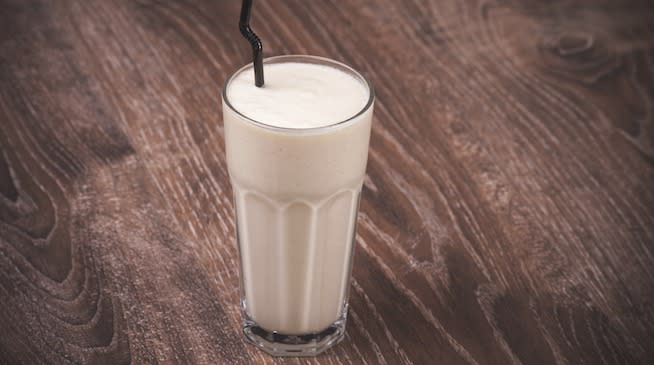How a Software Entrepreneur Stopped Eating Food

Too busy to eat? Or too busy to eat healthy? Read on.
Those of us over a certain age remember the movie Soylent Green (1973), a dystopian sci-fi nightmare set in the year 2022, in which overpopulation, climate change and pollution have made the earth virtually uninhabitable, and people are fed a processed food ration called Soylent Green. The end of the movie brings a shocking revelation: one of the ingredients in Soylent Green is human flesh.
The movie obviously slammed the word “soylent” with negative connotations. But that didn’t stop San Fran-based software entrepreneur Rob Rhinehart from naming his new synthetic food product “Soylent.”
According to a recent article in The New Yorker, Rhinehart, 25, who had studied electrical engineering at Georgia Tech, was working so many hours on a start-up venture and spending so much money on food that he “began to resent the fact that he had to eat at all.” He told New Yorker writer Lizzie Widdicombe: “Food was such a large burden. It was also the time and the hassle.”
Rhinehart started thinking about food as an engineering problem. “You need amino acids and lipids, not milk itself,” he said. “You need carbohydrates, not bread. [Fruits and vegetables] are mostly water. [Food] just seemed like a system that’s too complex and too expensive and too fragile.”
So after researching nutritional biochemistry, Rhinehart gathered 35 nutrients needed for survival, poured them all into a blender with some water and created Soylent. A month later, he published his results in a blog post entitled, “How I Stopped Eating Food.”
Widdicombe writes: “The chemical potion, Rhinehart reported, was ‘delicious! I felt like I’d just had the best breakfast of my life.’ Drinking Soylent was saving him time and money: his food costs had dropped from four hundred and seventy dollars a month to fifty. And physically, he wrote, ‘I feel like the six million dollar man. My physique has noticeably improved, my skin is clearer, my teeth whiter, my hair thicker and my dandruff gone.’ He concluded, ‘I haven’t eaten a bite of food in thirty days, and it’s changed my life.’”
In the spirit of “open source,” Rhinehart published his Soylent formula online—canola oil for lipids; maltodextran and oat flour for carbs; rice for protein; fish oil for omega 3s; quantities of vitamins and minerals magnesium, calcium and electrolytes; and a small amount of sucralose “to mask the taste of the vitamins”—and his experiment sparked a raft of copycats and tweakers, all bent on making their own D.I.Y. versions of “future food.” Nick Poulden, a Bay Area computer programmer, launched a website, DIY.Soylent.me, which allows users to enter their height, weight, age, activity level and “nutrient profile” (e.g., “Fat Guy in his 30s”), then assemble a custom recipe.
Rhinehart was undeterred. He shelved his software startup and formed a company to make and market Soylent, and he recently shipped the first 30,000 units to customers all over the U.S.
Should Athletes Consume Soylent?
Is Soylent advisable for athletes? The doctors Widdicombe spoke with said people could subsist on it, but it lacks phytochemicals found in plants. She writes, “Such compounds are not known to be essential for survival, but, in epidemiological studies, they appear to provide important health benefits. . . . The science behind how our bodies use these chemicals isn’t precisely understood. But Walter Willett, the chair of the nutrition department at Harvard School of Public Health, said it would be unwise to miss out on them.” Rhinehart considered adding phytochemicals but left them out of Soylent because “it didn’t seem like an efficient use of resources.”
About the name, Rhinehart said everybody advised him to change it—“investors, media people, my mom”—but he liked the self-deprecating nature of it, and the way it poked fun at foodie sensibilities: “The general ethos of natural, fresh, organic, bright—this is the opposite,” he said, adding “a lot of young people never got the memo about Soylent Green’s being people.”
This article originally appeared on STACK.com: How a Software Entrepreneur Stopped Eating Food

